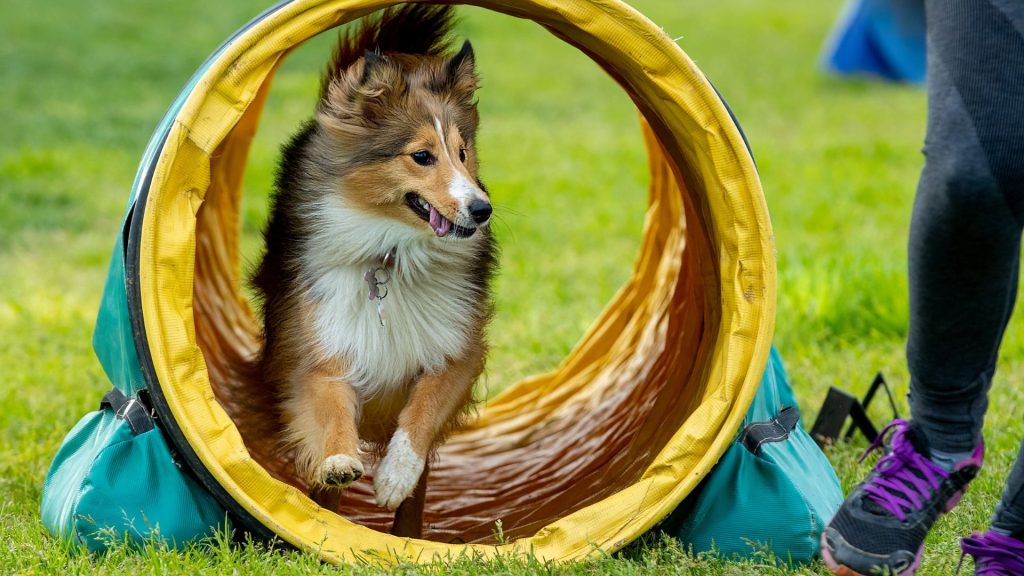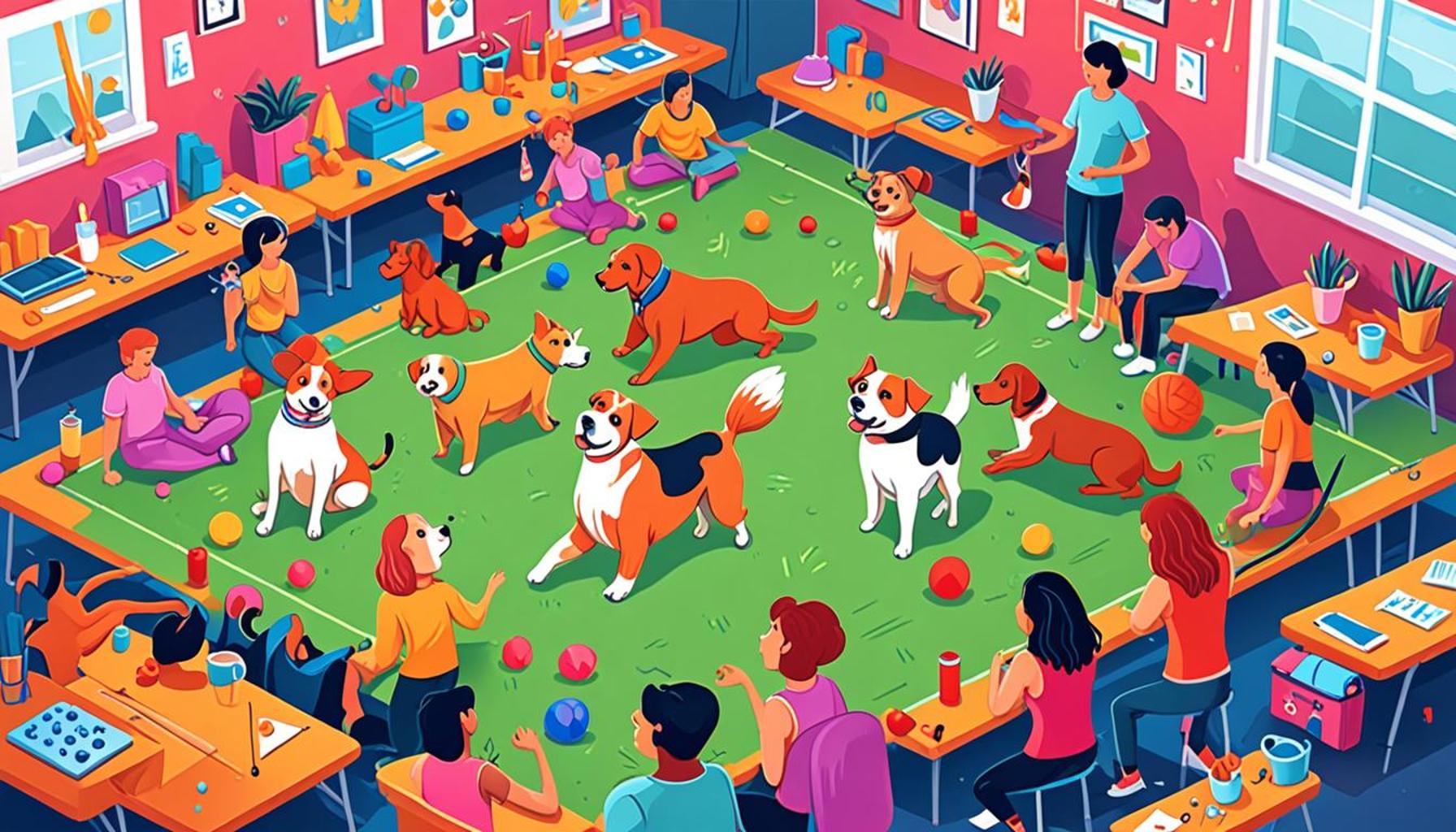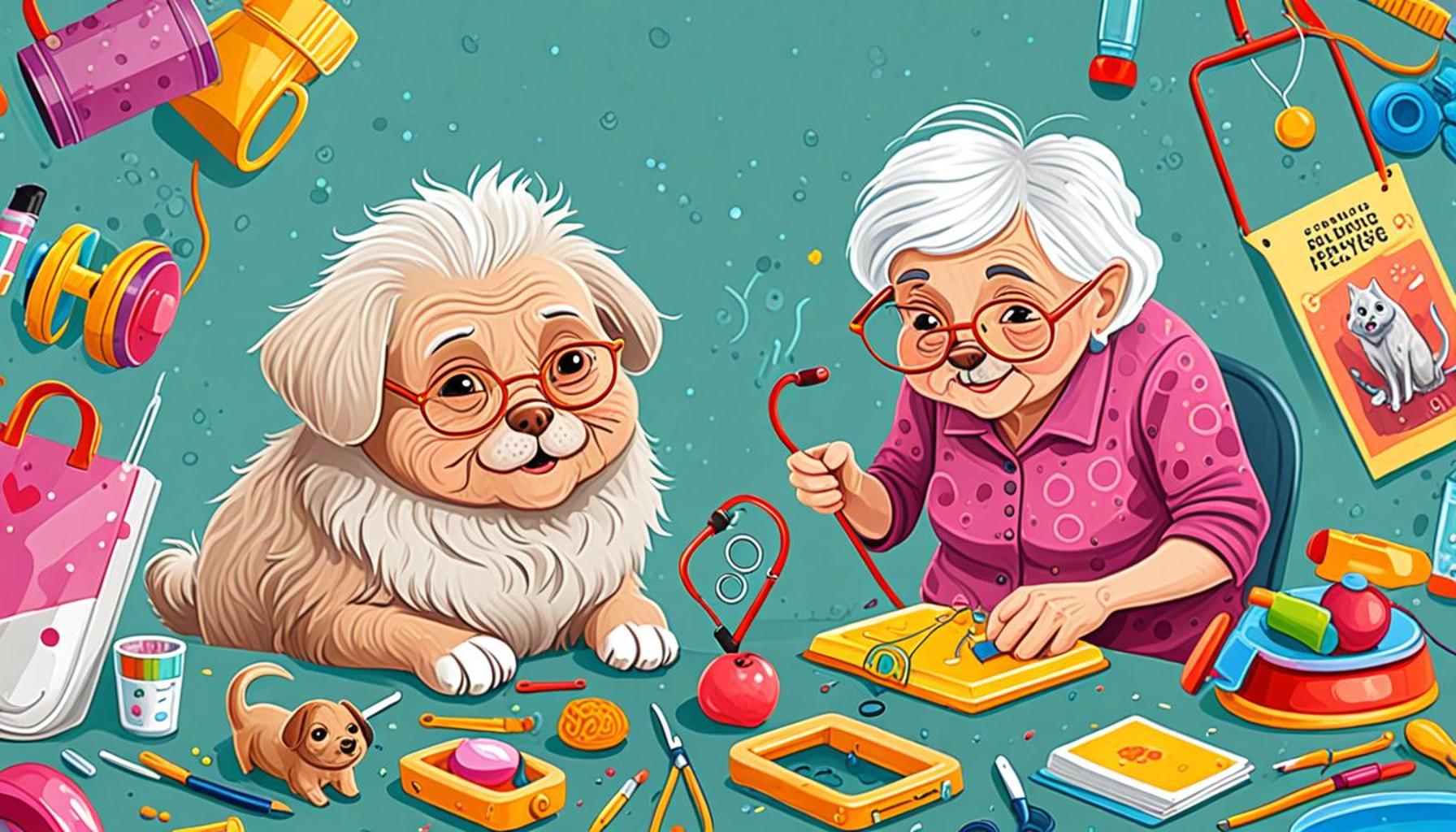Using Agility Training to Enhance Your Dog’s Physical and Mental Skills

Unlocking Your Dog’s Potential Through Agility Training
Agility training is not merely a fun pastime; it serves as a transformative tool that significantly enhances your dog’s physical and mental skills. As your dog engages in agility exercises, you may notice substantial improvements in their overall well-being and behavior, which can foster a happier and healthier pet.
Why consider agility training? The advantages are multi-faceted, with some of the most compelling reasons including:
- Physical Fitness: Dogs must navigate various obstacles such as jumps, tunnels, and weave poles, which help build their strength, endurance, agility, and coordination. Regular practice can lead to a toned physique and enhanced cardiovascular health.
- Mental Stimulation: Learning how to tackle these obstacles requires your dog to think critically and remain alert. This rigorous mental workout can stave off behavioral problems often associated with boredom and inactivity.
- Bonding Experience: Agility training encourages teamwork between you and your dog. Through positive reinforcement and encouragement, you help them overcome challenges, deepening your emotional connection.
Beyond these obvious benefits, agility training also contributes to improved problem-solving abilities and heightened confidence in your dog. Each obstacle they conquer boosts their self-esteem, ultimately leading to a more well-rounded and better-behaved pet.
Implementing Agility Training
You might be wondering how to incorporate agility training into your dog’s routine. Options abound, from simple jumps and tunnels to increasingly complex courses that are suitable for all skill levels. For beginner dogs, simple obstacles can offer just the right amount of challenge, while experienced canines can graduate to more intricate setups that require advanced skills and precision.
This variety not only keeps your dog engaged but also adds an element of fun to your training sessions. For instance, you can set up a mini-course in your backyard using household items like hula hoops, garden chairs, and cones, turning your space into an exciting training ground. Many communities in the United States also offer agility classes or workshops, which can provide you with valuable guidance and new techniques.

Conclusion
As you embark on this exciting journey into agility training, you will find that it is not just a means to an end, but an exhilarating way to play and grow alongside your furry friend. With a little dedication and creativity, you can create a rich training experience that not only develops your dog’s skills but also enriches your bond. Explore this joyful pursuit further, and discover new techniques, tips, and the thrilling world that awaits you in canine agility!
DIVE DEEPER: Click here to learn innovative techniques
The Foundations of Agility Training: What to Know Before You Start
Agility training is an exciting way to tap into your dog’s potential and promote their well-being on multiple levels. As you consider adopting this activity into your pet’s life, it’s essential to understand the principles and foundational skills that will guide you and your canine companion through this exhilarating journey. By breaking down the core elements of agility training, you can create an effective program tailored to your dog’s capabilities and personality.
Understanding Agility Equipment and Course Design
At the heart of agility training is the obstacle course, which consists of a series of challenges designed to test and improve various physical skills. Key components of an agility course include:
- Jumps: These can be simple bar jumps or more elaborate configurations like spread jumps, which help in enhancing your dog’s jumping ability and coordination.
- Tunnels: Dogs must navigate through these enclosed spaces, fostering confidence and teaching them to follow directional cues.
- Weave poles: This obstacle develops your dog’s agility, as they learn to zigzag between the poles, enhancing their body control and focus.
- Contact obstacles: Items like A-frames or seesaws challenge your dog to develop precise movements and strengthen their overall balance.
Properly designed courses allow for a smooth flow from one obstacle to the next, emphasizing the importance of speed and accuracy. As a beginner, start with fewer obstacles and gradually increase complexity as your dog becomes more comfortable and skilled at navigating through the challenges. This progressive approach not only boosts their physical fitness but also provides the mental stimulation necessary for development.
Essential Skills to Develop
Before diving into agility training, it’s crucial to ensure your dog has a solid foundation of obedience and basic skills. Here are some key skills that will enhance their agility training experience:
- Recall: Your dog should reliably come when called, especially when navigating obstacles. This foundational skill ensures they can follow your commands throughout the course.
- Stay: Teaching your dog to stay in one place until you release them helps prevent any accidents and promotes focus during training exercises.
- Basic commands: Commands such as “sit,” “down,” and “go” will further assist you in guiding your dog through the agility course with ease.
Strengthening these skills will create a positive learning environment and contribute to a smoother and more enjoyable agility experience. As you and your dog progress, you will likely witness remarkable transformations in their physical capabilities and mental sharpness.
In the following sections, we will explore training techniques that will refine these skills and set the stage for excellence in agility, allowing your dog to flourish in this exhilarating sport.
| Advantage | Description |
|---|---|
| Physical Fitness | Agility training helps dogs build muscle strength and endurance through various physical challenges. |
| Mental Stimulation | Engaging in agility courses enhances a dog’s problem-solving skills and boosts cognitive function, keeping them mentally sharp. |
| Bonding Experience | Participating in agility training facilitates a stronger bond between dog and owner, as they work together towards common goals. |
| Confidence Building | Completing agility challenges boosts a dog’s self-esteem, making them more adventurous and less fearful in new situations. |
Engaging in agility training not only enhances your dog’s physical and mental prowess, but also offers various other benefits for both the dog and the owner. Through a range of exercises, dogs can enjoy improved physical fitness, offering a workout that strengthens their muscles while enhancing their overall endurance. Additionally, agility courses act as a means of mental stimulation, encouraging dogs to engage their problem-solving skills, which can make them more adaptable and intelligent companions.Moreover, agility training fosters a profound bond between the dog and its owner. Working together towards achieving agility goals can create shared experiences that deepens the relationship. Focused on completing agility tasks, dogs also gain confidence, as they successfully overcome various obstacles, resulting in a more well-rounded and self-assured pet willing to explore new environments. This combination of benefits makes agility training an invaluable method for enhancing your dog’s life and wellbeing.
LEARN MORE: Click here to discover strategies
Training Techniques to Maximize Your Dog’s Agility
As you embark on your agility training journey, implementing effective training techniques is vital to enhance your dog’s performance and engagement. Developing agility skills goes beyond physical exercise; it involves mental stimulation, communication, and forging a stronger bond between you and your furry friend. Here are several focused techniques that will help you unlock your dog’s full potential in agility training.
Clicker Training: The Power of Positive Reinforcement
One of the most effective methods for training dogs, especially in agility, is clicker training. This technique utilizes a distinct sound from a clicker to indicate the exact moment your dog performs a desired behavior, making it easier for them to understand what actions earn rewards. Starting with simple commands, the clicker can help refine agility skills by increasing focus and building confidence.
For example, practice clicker training with obstacles like jumps and tunnels first. As your dog becomes more adept at the challenge, use the clicker to reinforce positive behaviors, such as proper form and speed. This method creates positive associations with agility tasks and encourages your dog to tackle obstacles with enthusiasm.
Building a Strong Handler-Dog Connection
A crucial aspect of successful agility training lies in developing a solid connection between you and your dog. Effective communication is key to successful navigation through the agility course. Using a mix of verbal commands, hand signals, and body movements, you can guide your dog while developing trust.
One recommended exercise is practicing rear crosses, where the handler moves behind the dog while they navigate an obstacle. This technique requires your dog to understand and respond to your body language, thus fostering a stronger connection. Regularly engaging in these exercises not only polishes their agility but also strengthens your overall relationship, making training more enjoyable for both parties.
Increasing Difficulty Gradually
As your dog becomes increasingly comfortable with agility tasks, gradually introduce more complex challenges to keep their training stimulating and engaging. Enhancing difficulty can be achieved by manipulating variable factors such as speed, distance, course layout, and the inclusion of multiple obstacles.
Begin with basic sequences—like a jump followed by a tunnel—and then gradually increase the number of obstacles or encourage your dog to perform the course at a faster pace. Additionally, consider adjusting the height of jumps or the angle of the weave poles to challenge your dog to adapt and refine their skills continuously. This incremental approach not only develops their agility but also contributes to mental resilience.
Socialization Through Group Classes
Engaging with other dogs and their handlers in a group class setting can greatly enhance your dog’s agility training experience. Socialization fosters healthy interactions, allowing your dog to become accustomed to distractions and competition environments. Group classes also provide opportunities to observe how other pets navigate obstacles, gleaning ideas for training strategies.
Moreover, working in a team environment can motivate your dog and help them develop the confidence they need when faced with a variety of challenges. This aspect of agility training highlights the importance of camaraderie, where both dogs and handlers can learn from one another, pushing each other to excel.
As you adopt these techniques, you’ll not only witness your dog’s growth in agility but also relish the shared experiences that deepen your relationship. Embracing agility training as a regular part of your dog’s routine will bolster their physical capacity and stimulate their minds, positioning them toward an enriched life full of excitement and learning.
DISCOVER MORE: Click here for effective dog training tips
Conclusion: Unlocking Your Dog’s Potential Through Agility Training
In conclusion, using agility training as a tool to enhance your dog’s physical and mental skills is not just beneficial—it’s an enriching experience that fosters a deeper connection between you and your canine companion. As we’ve explored, incorporating techniques like clicker training, building effective communication, and gradually increasing the difficulty of tasks play essential roles in shaping a dog’s agility journey.
The impact of agility training goes beyond simply navigating an obstacle course; it involves promoting mental stimulation, problem-solving abilities, and social interaction. When dogs are encouraged to engage with their environment while under your guidance, they learn to trust you and strengthen their ability to respond to commands, thus significantly boosting their confidence. Participating in group classes not only enhances the experience but also teaches dogs to work alongside their peers, preparing them for real-world challenges.
Ultimately, the agility training process embodies a holistic approach to dog care—melding physical fitness with intellectual development. As you embark on this enriching journey, remember that your commitment to agility training can lead to a happier, healthier, and more balanced life for your dog. Explore local training options, gather resources online, or connect with other enthusiasts to expand your knowledge further. Your engagement in agility training may very well unveil new layers of your dog’s talents and abilities, creating a joyful adventure for both of you.


